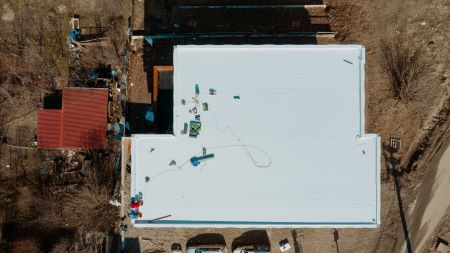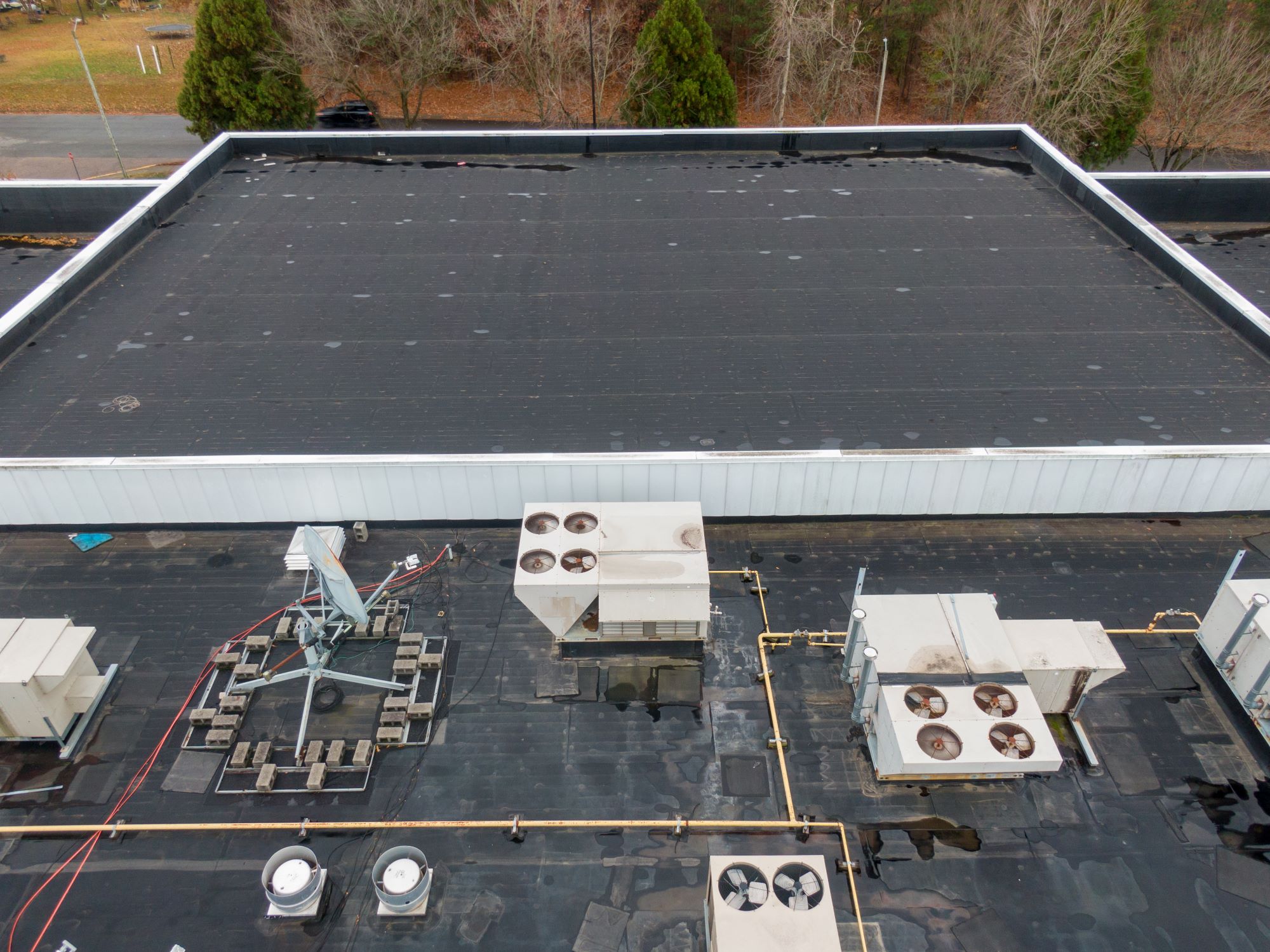The roof of a commercial building is a vital component of its structure, yet it is often overlooked until problems arise. Commercial roof maintenance plays a crucial role in ensuring the longevity, functionality, and safety of a building. Neglecting roofing maintenance can lead to a host of roofing problems, which can be costly to repair and even disrupt business operations. In this comprehensive guide, we will delve into the importance of commercial roof maintenance and provide roofing DIY tips to help businesses ensure the health of their roofs.
Understanding the Significance of Commercial Roofing Maintenance
The Roof as a Critical Component
The roof is more than just a cover over a commercial building; it serves as the first line of defense against the elements. A well-maintained roof protects the interior from rain, snow, wind, and harsh sunlight. It also insulates the building, making it energy-efficient. Without proper maintenance, a roof’s ability to provide these essential functions can deteriorate over time.
Prolonging Roof Lifespan
One of the primary reasons for investing in commercial roof maintenance is to extend the lifespan of the roof. A well-maintained roof can last significantly longer than one that is neglected. By addressing issues promptly and conducting routine inspections and repairs, businesses can avoid premature roof replacement, which can be a substantial financial burden.
Preventing Costly Repairs
Roofing problems left unaddressed can escalate into expensive repairs. Leaks, for example, can damage not only the roof but also the building’s interior, including walls, ceilings, and electrical systems. Repairing such extensive damage can be far more costly than regular maintenance measures.
Protecting Business Operations
A compromised roof can disrupt daily business operations. Water leaks, for instance, can damage inventory, equipment, and documents. Moreover, having to temporarily close the business for major roof repairs can result in lost revenue and customer inconvenience. Regular commercial roof maintenance helps prevent such disruptions.
Common Roofing Problems
Roof Leaks
Roof leaks are perhaps the most common and concerning roofing problem. They can occur due to various reasons, including damaged or deteriorating roofing materials, poor installation, or severe weather conditions. Regular roof inspections can help identify and address potential leak sources before they become major issues.
Ponding Water
Ponding water refers to the accumulation of water on a flat or low-slope roof. It can lead to structural damage, mold growth, and roof deterioration. Proper roof maintenance, including ensuring adequate drainage, can prevent ponding water and its associated problems.
Roof Membrane Damage
Roof membranes, such as EPDM, TPO, or PVC, can become damaged over time due to UV exposure, foot traffic, or extreme temperatures. Cracks, tears, or punctures in the membrane can compromise the roof’s waterproofing capabilities. Routine inspections and timely repairs can help maintain the integrity of the roofing membrane.
Roof Flashing Issues
Flashing is used to seal joints and transitions on the roof, such as where the roof meets a wall or chimney. Damaged or improperly installed flashing can lead to water infiltration. Regular roof maintenance should include checking and repairing flashing as needed to prevent leaks.
Gutter Problems
Gutters play a critical role in directing rainwater away from the roof and the building’s foundation. Clogged or damaged gutters can lead to water overflow, which can damage the roof and siding. Routine gutter cleaning and maintenance are essential to prevent these issues.
DIY Roofing Maintenance Tips
Regular Inspections
Routine roof inspections are the cornerstone of effective commercial roof maintenance. Business owners and facility managers can perform visual inspections to identify signs of damage, such as loose or missing shingles, cracks, or water stains on ceilings. Regular inspections can help catch roofing problems early and prevent costly repairs.
Clear Debris
Leaves, branches, and other debris can accumulate on the roof and in gutters, obstructing drainage and causing roof damage. Regularly clear debris from the roof surface and clean out gutters to ensure proper water flow.
Address Minor Repairs Promptly
When conducting inspections, if you notice minor issues like loose shingles or small cracks, address them promptly. DIY roof repair kits are available for some types of roofing materials. However, for more extensive or complex repairs, it’s advisable to consult with a professional roofing contractor.
Maintain Proper Ventilation
Proper roof ventilation is crucial for regulating temperature and moisture levels in the attic space. Inadequate ventilation can lead to issues like ice dams in cold climates or excessive heat buildup in hot climates. Ensure that vents and attic insulation are in good condition to maintain a balanced roofing environment.
Trim Overhanging Branches
Overhanging tree branches can pose a risk to the roof, especially during storms or high winds. Regularly trim branches that could potentially fall onto the roof and cause damage.
Consider Roof Coatings
Roof coatings can provide an extra layer of protection for certain roofing materials. They can help extend the lifespan of the roof, improve energy efficiency, and enhance resistance to UV rays. Consult with a roofing professional to determine if a roof coating is suitable for your commercial building.
The Cost Savings of Roof Maintenance
Preventing Expensive Repairs
The cost of routine commercial roof maintenance is significantly lower than the expense of major roof repairs or replacement. By addressing issues proactively, businesses can save money in the long run and avoid unexpected financial burdens.
Avoiding Business Disruption
A damaged roof that leads to leaks or other problems can disrupt business operations and result in lost revenue. By investing in regular maintenance, businesses can maintain uninterrupted operations and protect their bottom line.
Enhancing Energy Efficiency
A well-maintained roof with proper insulation and ventilation can contribute to energy savings. Improved energy efficiency can lead to reduced utility costs over time, further justifying the investment in roof maintenance.
Extending Roof Lifespan
Commercial roofs are a significant capital investment. By extending the lifespan of the roof through regular maintenance, businesses can maximize the return on their investment and delay the need for costly roof replacement.
Safety Considerations in Roof Maintenance

Roof Safety Practices
Safety should be a top priority when conducting any commercial roof maintenance activities. It’s essential to follow proper safety protocols, including the use of fall protection equipment, such as harnesses and guardrails. Additionally, ensure that all personnel involved in roof maintenance are trained in safety procedures.
Professional Roofing Contractors
For more complex maintenance tasks or repairs, it’s advisable to hire professional roofing contractors with the expertise and equipment to work safely at heights. These contractors are trained to handle roofing projects efficiently while adhering to safety standards.
Weather Considerations
Weather conditions can impact the safety of roof maintenance activities. Avoid working on the roof during adverse weather, such as high winds, rain, or snow, as it can increase the risk of accidents and injuries.
In conclusion, commercial roof maintenance is a critical aspect of preserving the integrity, functionality, and longevity of a building’s roofing system. Neglecting roof maintenance can lead to roofing problems that are not only costly to repair but can also disrupt business operations. However, with regular inspections, proactive DIY maintenance, and professional roofing assistance when needed, businesses can protect their investments and ensure the safety and comfort of their occupants.
Investing in commercial roof maintenance is not just a matter of financial prudence; it is a strategic decision that contributes to the overall success and sustainability of a business. By understanding the significance of roof maintenance, identifying common roofing problems, and following DIY maintenance tips, businesses can safeguard their roofs and avoid the headaches and expenses that come with neglecting this critical aspect of building management. Ultimately, a well-maintained roof is an asset that provides peace of mind and long-term value.

